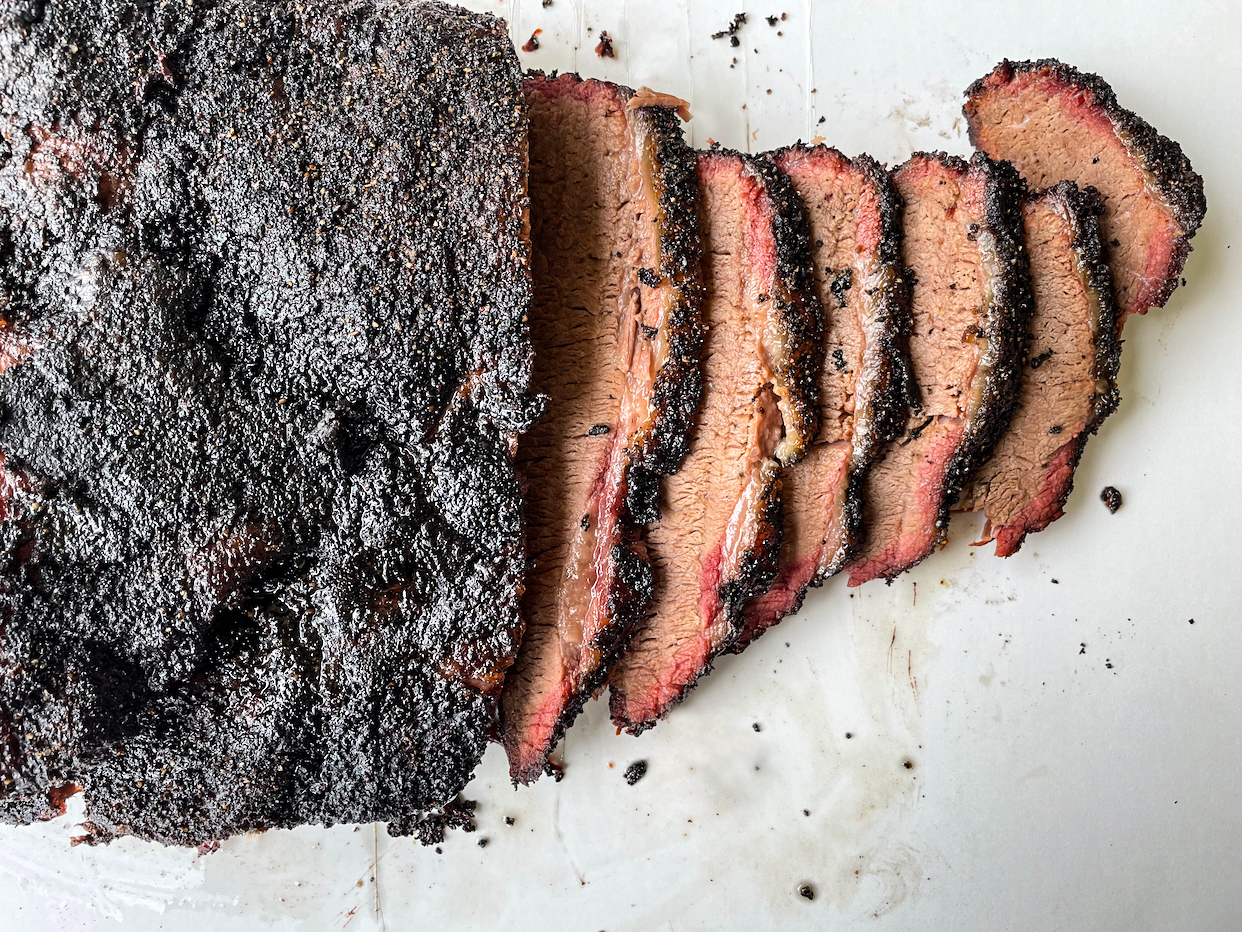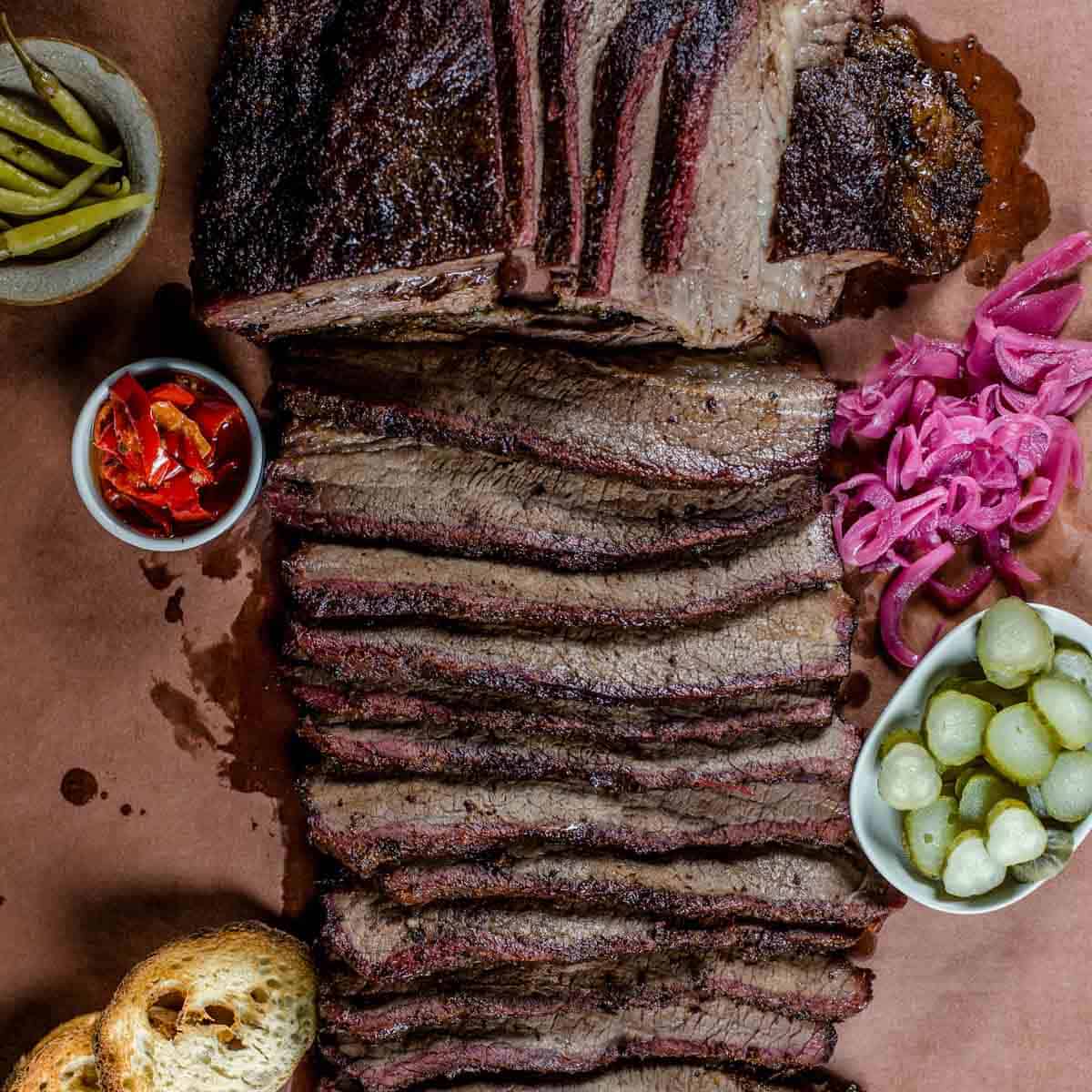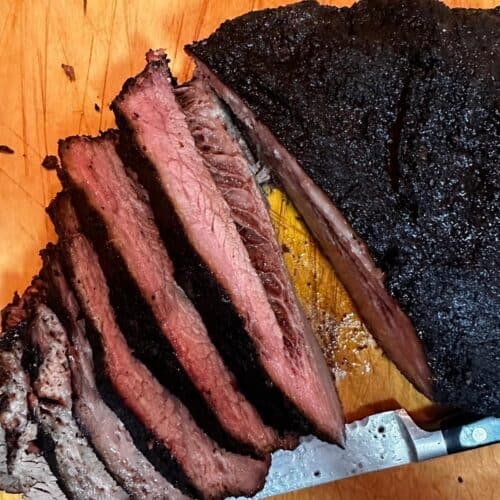
Introduction
When it comes to smoking brisket, the temperature at which you cook it can make a significant difference in the outcome. Many BBQ enthusiasts debate whether it’s better to smoke brisket at 225 or 250 degrees Fahrenheit. In this article, we will explore the importance of temperature in smoking brisket and delve into the differences between smoking at 225 and 250 degrees.
The Importance Of Temperature In Smoking Brisket
Brisket is a tough cut of meat that requires low and slow cooking to achieve optimum tenderness. The connective tissues and fat in brisket need time to break down and soften during the smoking process. Cooking at low temperatures, such as 225 degrees Fahrenheit, allows for this slow breakdown, resulting in a tender and flavorful brisket.
Understanding The Difference Between Smoking At 250 And 225 Degrees Fahrenheit
While both 225 and 250 degrees can yield delicious briskets, there are subtle differences in the cooking process and end result. Here’s a breakdown of each temperature:
Smoking at 225 degrees Fahrenheit:
- Longer cooking time: Cooking at 225 degrees will require a longer cooking time compared to 250 degrees. This extended duration allows for more tenderization of the meat.
- More smoke absorption: The longer cooking time at a lower temperature allows the brisket to absorb more smoke, resulting in a more intense smoky flavor.
- Slightly more moisture retention: The slower cooking at 225 degrees helps retain more moisture in the meat, leading to a juicier final product.
Smoking at 250 degrees Fahrenheit:
- Shorter cooking time: Cooking at 250 degrees will require a slightly shorter cooking time compared to 225 degrees. This can be advantageous if you’re short on time or have a smaller brisket.
- Faster crust formation: The higher heat at 250 degrees can aid in the formation of a crispy bark on the brisket’s exterior.
- Potential for less smoke absorption: The shorter cooking time at a higher temperature may result in less smoke absorption, leading to a milder smoky flavor.
In the end, the choice between smoking at 225 or 250 degrees Fahrenheit comes down to personal preference and the specific circumstances of your cook. Both temperatures can produce delicious results, but understanding the differences can help you make an informed decision. Experimenting with various temperatures may also help you discover your preferred method for smoking brisket.
Factors To Consider
When deciding between smoking brisket at 250 or 225 degrees Fahrenheit, there are a few factors to consider:
The Effect Of Temperature On Cooking Time
The cooking temperature directly affects the cooking time of the brisket. Smoking at 250 degrees Fahrenheit will result in a shorter cooking time compared to smoking at 225 degrees. This time difference can be significant, with a reduction of about 1 to 1.5 hours per pound when cooking at 250 degrees.
The Impact Of Temperature On Texture And Tenderness
The temperature at which you smoke the brisket also affects the texture and tenderness of the meat. Smoking at 225 degrees Fahrenheit allows for a longer, slower cook, which gives the connective tissues and fat in the brisket more time to break down and become tender. This slow breakdown results in a more tender and flavorful brisket. On the other hand, smoking at 250 degrees Fahrenheit will result in a slightly shorter cook time and a potential decrease in tenderness compared to cooking at 225 degrees.
It’s worth noting that both temperatures can yield delicious results, so the choice ultimately comes down to personal preference and the specific circumstances of your cook. If you prefer a juicier and more intensely flavored brisket, smoking at 225 degrees Fahrenheit may be the better option. However, if you’re short on time or prefer a slightly crisper bark on the exterior, smoking at 250 degrees Fahrenheit can be advantageous.
It’s also important to consider the size and weight of the brisket. Larger briskets may benefit from a lower smoking temperature and longer cook time to ensure thorough cooking and tenderness. Smaller briskets, on the other hand, may be more forgiving and cook well at the higher temperature of 250 degrees Fahrenheit.
In conclusion, there is no definitive answer to which temperature is the best for smoking brisket. It ultimately depends on your preferences, time constraints, and the specific circumstances of your cook. Experimenting with different temperatures can help you discover your preferred method and achieve the perfect brisket every time.
Smoking Brisket At 225 Degrees Fahrenheit
Benefits Of Smoking At A Lower Temperature
Smoking brisket at 225 degrees Fahrenheit offers several benefits that contribute to achieving a tender and flavorful final product:
- More time for collagen breakdown: The lower temperature allows the connective tissues and collagen in the brisket to break down slowly over time. This breakdown results in a more tender and juicy brisket.
- Enhanced flavor development: The prolonged cooking period at 225 degrees Fahrenheit allows the flavors from the smoke and seasonings to permeate deeply into the meat, resulting in a rich and well-developed flavor profile.
- Retained moisture: The longer cooking time at a lower temperature helps to retain more moisture in the meat, resulting in a juicy and succulent brisket.
Tips For Successfully Smoking Brisket At 225 Degrees
- **Patience**: Cooking brisket at a lower temperature requires patience as it takes longer to reach the desired level of tenderness. Plan ahead and allocate enough time for the cooking process.
- Maintain consistent temperature: Use a reliable smoker or grill that allows you to maintain a consistent temperature of 225 degrees Fahrenheit throughout the cooking process. Fluctuations in temperature can affect the cooking time and final texture of the brisket.
- Monitor internal temperature: Invest in a good quality meat thermometer to monitor the internal temperature of the brisket. It is recommended to cook the brisket until it reaches an internal temperature of around 195 to 205 degrees Fahrenheit for optimal tenderness.
- Consider using a water pan: Placing a water pan in the smoker helps to create a moist environment, which can aid in preventing the brisket from drying out during the long cooking process.
- Wrap or rest the brisket: Consider wrapping the brisket in foil or butcher paper during the cooking process to help retain moisture. After cooking, allow the brisket to rest for at least 30 minutes to an hour before slicing. This allows the juices to redistribute throughout the meat, ensuring a moist and tender final result.
By following these tips and cooking at 225 degrees Fahrenheit, you can achieve a perfectly tender and flavorful brisket that will impress your family and friends. Experimentation and practice will help you master the art of smoking brisket at this lower temperature.
Smoking Brisket At 250 Degrees Fahrenheit
Advantages Of Smoking At A Slightly Higher Temperature
Smoking brisket at 250 degrees Fahrenheit offers its own set of advantages that can result in a delicious and tender brisket:
- Shorter cooking time: Cooking brisket at a slightly higher temperature can reduce the overall cooking time. This can be beneficial if you’re short on time or prefer a quicker cooking process.
- Bold bark development: The higher temperature promotes the development of a thick and flavorful bark on the exterior of the brisket. This bark adds texture and a smoky crust to the final product.
- Higher fat rendering: The increased heat helps to render fat more quickly, resulting in a moist and rich brisket.
Techniques For Smoking Brisket At 250 Degrees
To ensure a successful brisket cook at 250 degrees Fahrenheit, consider following these techniques:
- Flavorful rubs: Use a flavorful rub or seasoning blend to enhance the taste of the brisket. The higher heat can intensify the flavors from the seasonings.
- Monitor temperature: Invest in a reliable meat thermometer to closely monitor the internal temperature of the brisket. Aim for an internal temperature of around 195 to 205 degrees Fahrenheit for optimal tenderness.
- Basting or mopping: Baste or mop the brisket with your choice of liquids or marinades during the cooking process to add moisture and enhance the overall flavor.
- Resting period: Similar to smoking at 225 degrees, it is essential to allow the brisket to rest for at least 30 minutes to an hour after cooking. This allows the juices to redistribute and ensures a juicy and tender final result.
By utilizing these techniques and cooking at 250 degrees Fahrenheit, you can achieve a flavorful and succulent brisket in a shorter amount of time. Experimentation and practice will help you find the perfect balance and determine which temperature works best for your desired outcome.

Flavor Profiles
Differences In Flavor When Smoking At Different Temperatures
When smoking brisket at 225 degrees Fahrenheit, the low and slow cooking process allows the flavors to develop gradually. This results in a deep smoky flavor that penetrates the meat, giving it a traditional and rich taste. The longer cooking time at this lower temperature allows the spices and seasonings to marry with the beef, creating a harmonious flavor profile.
On the other hand, smoking brisket at 250 degrees Fahrenheit can lead to a slightly different flavor profile. The higher temperature may produce a slightly milder smoky flavor compared to smoking at 225 degrees. The shorter cooking time can result in a less intense infusion of flavors, but still provides a delicious and tender brisket.
How To Achieve Desired Flavor Profiles At 225 And 250 Degrees
If you prefer a stronger and more pronounced smoky flavor, smoking brisket at 225 degrees Fahrenheit is the way to go. To achieve optimal flavor at this temperature, consider the following tips:
- Choose wood: Selecting the right wood for smoking is crucial. Woods like hickory, mesquite, and oak deliver robust smoky flavors that complement the beef well.
- Patience: The low and slow cooking process at 225 degrees requires patience. Give the flavors time to develop, allowing the smoky essence to penetrate the meat fully.
- Seasonings: Use a flavorful rub or seasoning blend with ample spices and herbs. These will further enhance the overall flavor of the brisket.
For a slightly milder smoky flavor, smoking brisket at 250 degrees Fahrenheit is an excellent choice. To achieve the desired flavor profile at this temperature, consider the following:
- Wood selection: Opt for woods like fruitwood (apple or cherry) or pecan to achieve a lighter smoky flavor.
- Seasonings: Use a well-balanced rub or seasoning blend that won’t overpower the brisket. The higher heat can intensify the flavors from the seasonings.
- Basting: Basting the brisket with a flavorful liquid or marinade during cooking can help enhance the overall taste.
Regardless of the temperature chosen, keep in mind that the quality of the meat and the cooking techniques you employ influence the final flavor profile. Experimentation and practice will help you find the perfect balance and determine which temperature works best for your desired outcome.
Pitmaster Expert Opinions
Insights From Professional Pitmasters On Temperature Preferences
Professional pitmasters have varying opinions on the ideal temperature for smoking brisket. Some prefer the traditional low and slow approach at 225 degrees Fahrenheit, while others opt for a slightly higher temperature of 250 degrees Fahrenheit. Here are some insights from experts:
- John, a pitmaster with years of experience, believes that smoking brisket at 225 degrees Fahrenheit allows for a longer cooking time, which results in more tender and flavorful meat. He recommends using a flavorful rub and giving the brisket enough time to develop a rich smoky flavor.
- Lisa, another seasoned pitmaster, prefers smoking brisket at 250 degrees Fahrenheit. She finds that the higher temperature cooks the meat faster without sacrificing tenderness. Lisa suggests basting the brisket during cooking to keep it moist and enhance the flavors.
Different Approaches And Methods Used By Pitmasters
Pitmasters have developed various techniques and methods to achieve excellent results when smoking brisket. Here are some popular approaches:
| 225 Degrees Fahrenheit | 250 Degrees Fahrenheit |
|---|---|
|
|
Both approaches have their merits and can result in delicious brisket. It ultimately comes down to personal preference and the desired flavor profile. Pitmasters often experiment with different temperatures, woods, rubs, and cooking times to find what works best for them.
Generated Text:
Pitmaster Expert Opinions
Insights From Professional Pitmasters On Temperature Preferences
Professional pitmasters have varying opinions on the ideal temperature for smoking brisket. Some prefer the traditional low and slow approach at 225 degrees Fahrenheit, while others opt for a slightly higher temperature of 250 degrees Fahrenheit. Here are some insights from experts:
- John, a pitmaster with years of experience, believes that smoking brisket at 225 degrees Fahrenheit allows for a longer cooking time, which results in more tender and flavorful meat. He recommends using a flavorful rub and giving the brisket enough time to develop a rich smoky flavor.
- Lisa, another seasoned pitmaster, prefers smoking brisket at 250 degrees Fahrenheit. She finds that the higher temperature cooks the meat faster without sacrificing tenderness. Lisa suggests basting the brisket during cooking to keep it moist and enhance the flavors.
Different Approaches And Methods Used By Pitmasters
Pitmasters have developed various techniques and methods to achieve excellent results when smoking brisket. Here are some popular approaches:
| 225 Degrees Fahrenheit | 250 Degrees Fahrenheit |
|---|---|
|
|
Both approaches have their merits and can result in delicious brisket. It ultimately comes down to personal preference and the desired flavor profile. Pitmasters often experiment with different temperatures, woods, rubs, and cooking times to find what works best for them.
Food Safety Considerations
Ensuring Safe Internal Temperatures When Smoking Brisket
When smoking brisket, it is important to prioritize food safety by ensuring the meat reaches a safe internal temperature. The danger zone for bacterial growth is between 40℉ and 140℉. By setting your grill to 200℉ or above, you can minimize the time the brisket spends in this temperature range and guarantee food safety.
How To Avoid Undercooking Or Overcooking At 225 Or 250 Degrees
Both smoking brisket at 225 degrees Fahrenheit and 250 degrees Fahrenheit have their advantages and potential pitfalls. Here are some tips to avoid undercooking or overcooking at these temperatures:
- For smoking at 225 degrees Fahrenheit, it is crucial to allow for a longer cooking time to ensure tenderness. Use a reliable meat thermometer to monitor the internal temperature and remove the brisket from the grill when it reaches around 195-205 degrees Fahrenheit.
- When smoking at 250 degrees Fahrenheit, the higher heat intensity can lead to faster cooking. Keep an eye on the internal temperature to prevent overcooking. The brisket is done when it reaches a similar internal temperature of 195-205 degrees Fahrenheit.
By following these guidelines and using a meat thermometer to monitor the doneness of the brisket, you can achieve perfectly cooked and safe-to-eat smoked brisket at both 225 and 250 degrees Fahrenheit.

Final Verdict
Comparing The Results And Preferences Of Smoking At 225 And 250 Degrees
Both smoking brisket at 225 degrees Fahrenheit and 250 degrees Fahrenheit have their advantages and unique outcomes. Pitmasters have different preferences based on their individual experiences and desired flavor profiles. Here is a summary of the differences:
- Smoking at 225 degrees Fahrenheit:
- Longer cooking time results in more tender and flavorful meat.
- Intense smoky flavor develops during the slow cooking process.
- Requires patience and attention to achieve desired results.
- Robust wood selection enhances the smoky flavor.
- Smoking at 250 degrees Fahrenheit:
- Shorter cooking time while maintaining tenderness.
- Milder smoky flavor compared to lower temperature.
- Higher heat intensifies flavors in the meat.
- Lighter wood selection complements the cooking process.
Choosing The Best Temperature Based On Personal Preferences And Desired Outcome
When deciding between smoking brisket at 225 or 250 degrees Fahrenheit, consider the following factors:
- Personal preference: Do you enjoy a more intense smoky flavor and are willing to invest more time in cooking? Opt for smoking at 225 degrees Fahrenheit. If you prefer a milder smoky flavor and want to reduce the cooking time, 250 degrees Fahrenheit may be your preference.
- Desired outcome: Consider the texture and tenderness you want to achieve. Smoking at 225 degrees Fahrenheit will result in a more tender and moist brisket, while 250 degrees Fahrenheit might yield a slightly firmer texture.
Ultimately, the best temperature for smoking brisket depends on your personal taste and desired outcome. Experimenting with different temperatures, cooking times, wood types, and seasoning techniques will help you find the perfect combination that suits your preferences. Remember to prioritize food safety by ensuring the brisket reaches a safe internal temperature. Use a reliable meat thermometer to monitor the doneness of the brisket, whether smoking at 225 or 250 degrees Fahrenheit.
Conclusion
Summary Of Key Points Discussed
After comparing the results and preferences of smoking brisket at 225 and 250 degrees Fahrenheit, it is evident that both temperature ranges have their advantages and unique outcomes. Smoking at 225 degrees Fahrenheit results in a longer cooking time, leading to more tender and flavorful meat. The slow cooking process also develops a more intense smoky flavor. On the other hand, smoking at 250 degrees Fahrenheit reduces the cooking time while maintaining tenderness. The smoky flavor is milder compared to the lower temperature, but the higher heat intensifies the flavors in the meat.
Encouragement To Experiment And Find The Preferred Smoking Temperature
When deciding on the best temperature for smoking brisket, it ultimately comes down to personal preferences and desired outcomes. If you enjoy a strong smoky flavor and are willing to invest more time in cooking, 225 degrees Fahrenheit is the way to go. If you prefer a milder smoky flavor and want to shorten the cooking time, 250 degrees Fahrenheit may be more suitable. It is essential to consider the texture and tenderness you want to achieve as well.
To find the perfect combination that suits your preferences, don’t be afraid to experiment with different temperatures, cooking times, wood types, and seasoning techniques. By doing so, you can discover the exact smoking temperature that delivers the desired flavor and tenderness for your brisket. Just remember to prioritize food safety by ensuring the brisket reaches a safe internal temperature, regardless of whether you are smoking at 225 or 250 degrees Fahrenheit.
In conclusion, there is no definitive answer to which temperature is the best for smoking brisket. It all comes down to personal taste and desired outcome. So, fire up your grill, explore different smoking temperatures, and enjoy the delicious results of your BBQ adventures!
FAQ – Smoking Brisket at 250 vs 225: Understanding Temperature Variations
Q: What is the ideal smoking temperature for brisket?
A: The ideal smoking temperature for brisket is typically around 225 to 250 degrees Fahrenheit.
Q: What is the difference between smoking at 250 and 225 degrees?
A: The main difference between smoking at 250 and 225 degrees is the cooking time and tenderness of the brisket. Smoking at 250 degrees will generally result in a faster cooking time, while smoking at 225 degrees will result in a slower and more tender brisket.
Q: Does cooking at a higher temperature impact the tenderness of the brisket?
A: Yes, cooking at a higher temperature, such as 250 degrees, can slightly impact the tenderness of the brisket. The higher temperature can cause the meat to cook faster, resulting in a slightly less tender texture. However, it can still produce a delicious end result.
Q: Does cooking at a lower temperature result in a better smoke flavor?
A: Cooking brisket at a lower temperature, such as 225 degrees, allows for a longer exposure to smoke, enhancing the smoky flavor. This lower temperature also gives more time for the connective tissues to break down, resulting in a more tender brisket.
Q: Can I still achieve a tender and juicy brisket at 250 degrees?
A: Absolutely! While smoking at a higher temperature may result in a slightly less tender brisket, it can still turn out tender and juicy if done correctly. Just make sure to monitor the internal temperature and use other techniques like wrapping in foil or butcher paper to retain moisture.
Q: How long does it typically take to smoke a brisket at 225 degrees?
A: Smoking a brisket at 225 degrees can take anywhere from 1 to 1.5 hours per pound, making it a slower cooking process. This allows for the connective tissues to break down, resulting in a more tender final product.
Q: How long does it typically take to smoke a brisket at 250 degrees?
A: Smoking a brisket at 250 degrees will generally cook faster than at 225 degrees. It can take around 45 minutes to 1 hour per pound. However, the cooking time can vary depending on the size and thickness of the brisket, so it’s important to use a meat thermometer to ensure it reaches the desired internal temperature.
Q: Can I adjust the temperature during the smoking process?
A: Yes, you can adjust the temperature during the smoking process. However, it’s important to avoid large temperature fluctuations, as this can affect the cooking time and tenderness of the brisket. It’s recommended to make small adjustments and maintain a consistent temperature as much as possible.
Q: Which temperature should I choose for smoking brisket – 250 or 225 degrees?
A: The choice between 250 and 225 degrees depends on your preference and time constraints. If you prefer a slightly faster cook time and don’t mind sacrificing a bit of tenderness, smoking at 250 degrees is a good option. However, if you have the time and want the most tender and flavorful brisket, smoking at 225 degrees is recommended.
In summary, smoking brisket at either 250 or 225 degrees can result in a delicious and enjoyable meal. Both temperatures have their advantages, but it ultimately comes down to personal preference and the desired cooking time. Regardless of the temperature chosen, patience, proper monitoring, and technique will help you achieve a mouthwatering smoked brisket.

Keep up with weekly specials through Facebook under “The Grill at Great Bridge.”